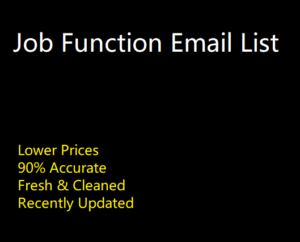In any organization, a job description serves as a fundamental document that outlines the roles, responsibilities, and requirements of a specific job position. It provides a comprehensive summary of the tasks and expectations associated with the role. While some may view job descriptions as mere paperwork, they play a crucial role in enhancing organizational efficiency and contributing to employee success. This article delves into the functions of job descriptions, exploring how they streamline recruitment processes, foster effective communication, promote employee performance, and facilitate career development.
1. Clear Communication and Expectations:
A well-crafted job description serves as a primary communication tool between employers and employees. It provides clarity regarding the duties and responsibilities Psychiatrist Email Addresses associated with the role, ensuring that both parties have a mutual understanding of what is expected. This clarity helps in avoiding misunderstandings and conflicts that may arise due to vague or unclear job roles, fostering a more harmonious work environment.
2. Facilitating Recruitment and Selection:
For the recruitment process. Job descriptions act as a compass. Guiding HR personnel and hiring managers in identifying the most suitable candidates for the vacant position. By clearly outlining the necessary qualifications, skills, and experience required. Job descriptions streamline the screening. And selection process enabling the organization to attract candidates who align with the company’s needs and culture.
3. Defining Job Boundaries:
Job descriptions set boundaries for the role. Establishing limits on what the employee should and should not do within their position. This ensures that employees B2C Fax understand their scope of authority and prevents unnecessary overlap with other roles. Thus minimizing conflicts and promoting a cohesive work environment.

